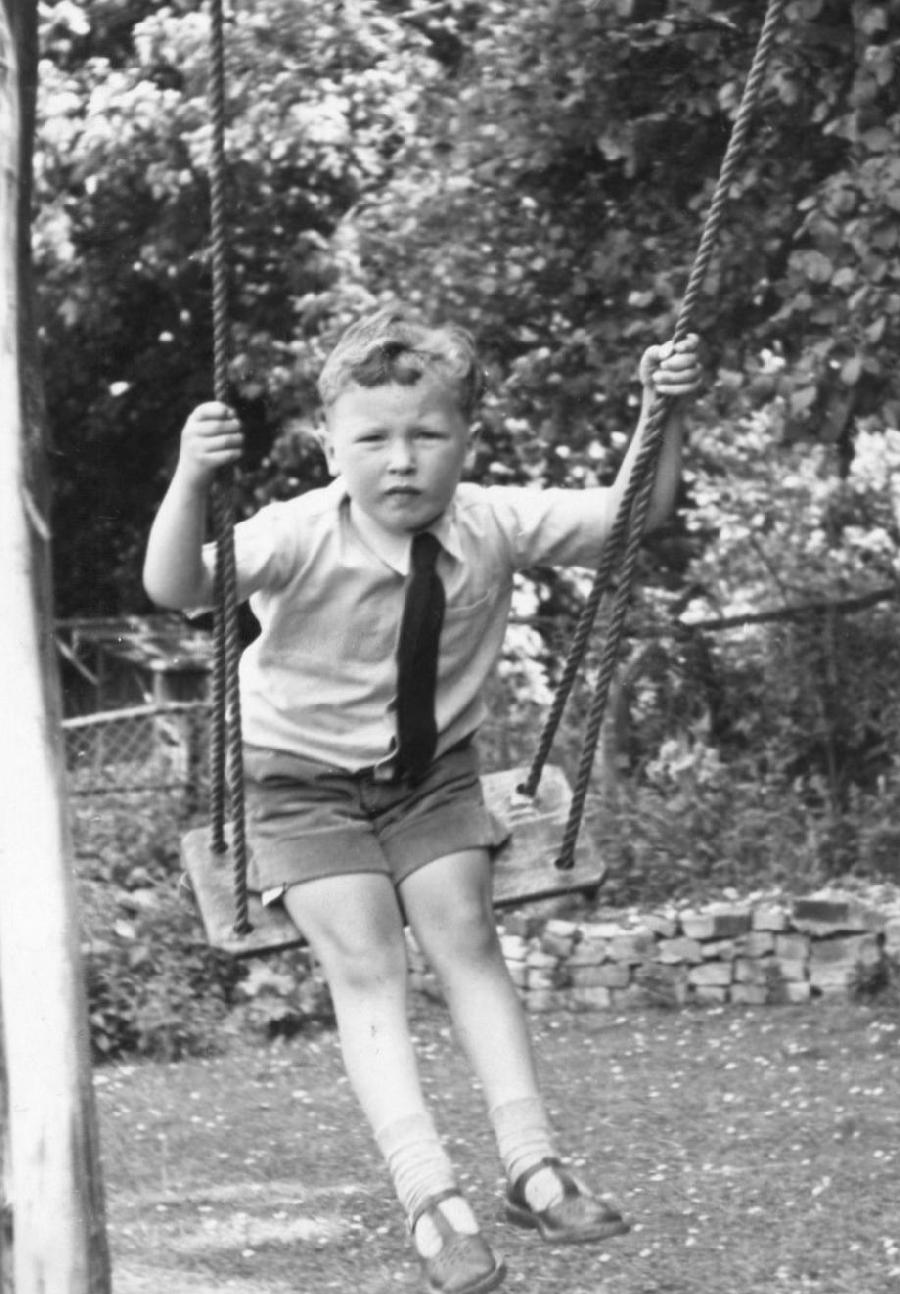
English Sandals: Comfort and Practicality

Figure 1.--This English boy is enjoying the swing in his back garden, we think in the 1950s. He looks to be about 5-years old. The tie suggests he has come home from kindergarten. The closed toe-sandals were so commonky worn to school that they were called school sandals. He probably could not tie his shoe laces yet.
|
|
Sandals were practical, conforable shoewear for children. During the summer the extra ventilation made them cool to wear. We note children wearing them both with and without socks. This apparently depended mostly on mother's attitudes. For school the childrem mostly wore socks although a few schools dispensed with socks during the summer term. They were especially practical for younger children. Tieing shoe laces is a complicated task fo a younger child. I recall having trouble mastering the task and always had my laces untied. I am not sure now, howevr, at just what age I finally was able to my own shoes;aces. Closed-toe sandals buckle on and are thus easier for little ones to put on and take off than shoes with laces that need to be tied. Both boys and girls wore sanals. We think it took noys a lottl lomger to tie their laces than the girls. These two factors, comfort and practicality are why sandals became so popular in England. Although we arenot entireky sure why popularity varied so much from country to country.
HBC

Navigate the Boys' Historical Clothing Sandal Pages:
[Return to Main English sandal page]
[Return to Main shoe page]
[Return to Main English footwear page]
Navigate the Boys' Historical Clothing Web Site:
[Introduction]
[Activities]
[Biographies]
[Chronology]
[Cloth and textiles]
[Clothing styles]
[Countries]
[Topics]
[Bibliographies]
[Contributions]
[FAQs]
[Glossaries]
[Images]
[Links]
[Registration]
[Tools]
[Boys' Clothing Home]
Created: 7:35 AM 2/14/2015
Last updated: 7:35 AM 2/14/2015



